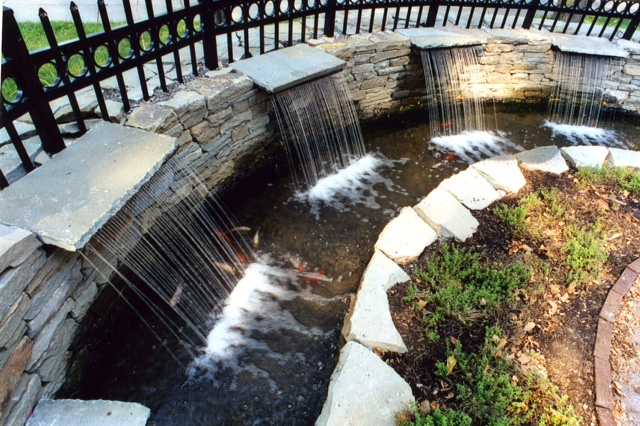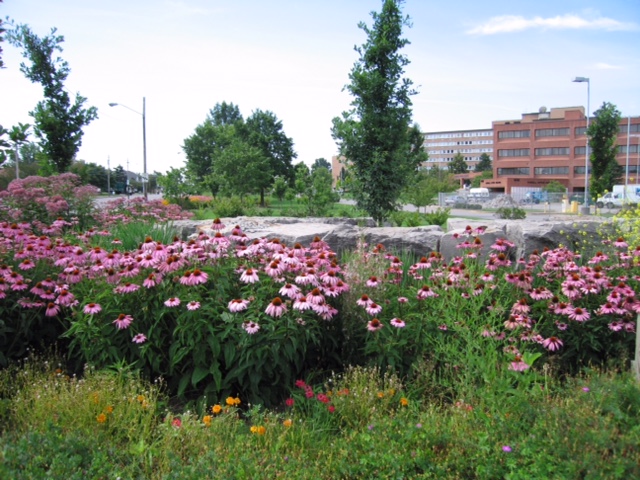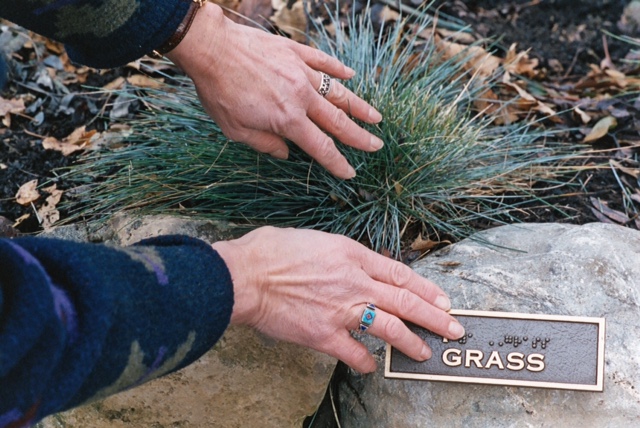Healing Ways

 Through the years, Bruce Zaretsky has designed enough healing gardens that he knows just how comforting they can be for patients, caregivers and loved ones. But they only work, he notes, when designers keep some basic principles and several user-specific design factors in mind.
Through the years, Bruce Zaretsky has designed enough healing gardens that he knows just how comforting they can be for patients, caregivers and loved ones. But they only work, he notes, when designers keep some basic principles and several user-specific design factors in mind.
Bruce Zaretsky
In booking a hotel room, would you ever ask why the ones with a garden or pool view command a premium over those that overlook the parking lot? In finding a place to build your custom home, would you ever ask why the wooded lot with a pond has a higher asking price than the one nearby that has been clear-cut and drained?
It’s no mystery that we humans have an innate desire to look at and experience nature and that we generally feel more comfortable, better, when our surroundings include gardens, water and trees. Even in doing something as mundane as driving to a big-box store on our town’s fringes, I’ll often pick indirect routes that carry me past a beautiful flowering tree or lily-filled pond or along a meadow in full spring glory spreading out to the horizon. Like bees to pollen, we’re attracted to beautiful gardens, water and natural spaces.
While we all seem to know that these spaces are beautiful to look at, however, it seems that fewer of us recognize that these vistas are physically healing for us as well. I’ve written on this subject in WaterShapes on a couple of past occasions, but my belief in the power of gardens not only to please us but to change us for the better has only grown through the passing years.
COMPOUNDED VALUE
Just the act of walking through a garden has an immediate, calming effect on us. You know this: When life’s stresses mount, there’s no better remedy than to break away, even for a few minutes, to take a turn around a park, head off into the woods or even step into the backyard to feed the fish or deadhead a few faded flowers. There’s a meditative quality to any of these pursuits, and only a few minutes can make a substantial difference.

Study after study has shown the same results. One now-famous study, conducted in the 1980s by Dr. Roger Ulrich of Texas A & M University (College Station, Texas), had patients who were undergoing the same surgery placed in two different types of rooms. One set of rooms had views of a group of trees; the others looked out to brick walls.
Patients with the nature views had far shorter lengths of stay in the hospital, less need for pain medications and made fewer negative comments to staff. Aside from the obvious reasons for this variance in healing time attributable to the soothing, relaxing sights, sounds and fragrances of nature, there was also a less-obvious factor: The beauty of the garden caused patients’ stress levels to drop. This resulted in quicker blood-pressure stabilization and symptom reduction that might otherwise have exacerbated existing issues or invited new ones. Long story short: If you’re contented and relaxed, you simply are healthier.

Even the simplest backyard garden can exercise curative powers: If a client has a stressful job – as a classroom teacher or a dentist or a Fortune 100 executive, it doesn’t really matter because most jobs carry their own sets of pressures and burdens – I’ll describe for them the process of coming home, pouring a beer or glass of wine and stepping out into the garden. It’ll only take a moment for a day’s stresses to peel away as they cut flowers to take back into the house, watch the fish in the pond or sit on the garden bench to take some deep breaths.
That’s a healing garden. And if someone has a sick partner or has lost a loved one, being there at peace in a space they shared, walking through a cluster of favorite trees or passing his or her favorite piece of garden art, is a process of healing, pure and simple.
MAKING IT WORK
As you can see, I paint with a broad brush when it comes to healing gardens: Just about any space, thoughtfully arranged and carefully maintained, can become a source of healing as time passes, as memories and associations collect and as the surroundings we’ve established take on weight and meaning for our clients.
To make these gardens, we at Zaretsky & Associates (Rochester, N.Y.) almost always start with flowing water, using its soothing sounds to set the tone and ease people into a relaxing experience. Often this involves fountains, where we aim to create sonorous, deeper-pitched tones as water drops into the basin. Or we’ll include streams and gentle cascades if space permits, focusing again on simple, sonorous flows rather than pursuing the drama of a tumultuous, raging waterfall.

We also use fragrant plants. The researchers write about how odors trigger happy memories of childhood. For my part, I’m satisfied that they make people slow down not only to pick out and identify certain scents, but also to absorb details of the setting. This means doing my best to collect an array of plants that emit scents through as much of the year as possible.
As for furnishings, we think in terms of easily-movable chairs and benches to give people the freedom to choose their spots for solace or comfort. We’ve often been surprised, in visiting hospital and public gardens, to see where folks have decided to sit: It’s not always right next to a fountain or stream or fragrant plant; rather, it’s as often in some sort of secluded space, even if it’s away from what we’d figured would be the “popular” spots.
Finally, we set up structures for shade and weather protection. Let’s face it: Especially when a loved one is in the hospital, we don’t get to choose the timing. So we focus on giving garden visitors one less thing to worry about while they settle into a space to sit, think or shed a few tears.
It’s important to note that this is a discussion of what might be termed “generic” healing gardens for a hospital or residential garden. By contrast, some healing gardens are distinctly more complex, such as those developed for specific groups – including the Alzheimer’s patients mentioned above.

We know, however, that in consultation with caregivers, we can meet the needs of patients of almost every variety, from the veteran returning from war with post-traumatic stress disorder to the senior who’s losing his or her eyesight. To me, designing healing gardens is a train of thought – a cluster of ideas, materials and possibilities that flow from the core desire to calm things down and make it easier for people to heal. In that sense, it’s a bit like a tool kit where you make choices depending on the specific needs of those who will be using the space once we’ve completed our work.
From the soothing sounds of running water or the mesmerizing vision of a fire pit to the pleasing scents of a garden’s fragrances or the ability to place a chair where it needs to go – all of this combines to reduce any garden visitor’s stress level. Add in birds, butterflies and the other wildlife these gardens attract, then step back and let the healing begin!
Bruce Zaretsky is president of Zaretsky and Associates, a landscape design/construction/consultation company in Rochester, N.Y. Nationally recognized for creative and inspiring residential landscapes, he also works with healthcare facilities, nursing homes and local municipalities in conceiving and installing healing and meditation gardens. You can reach him at [email protected]









